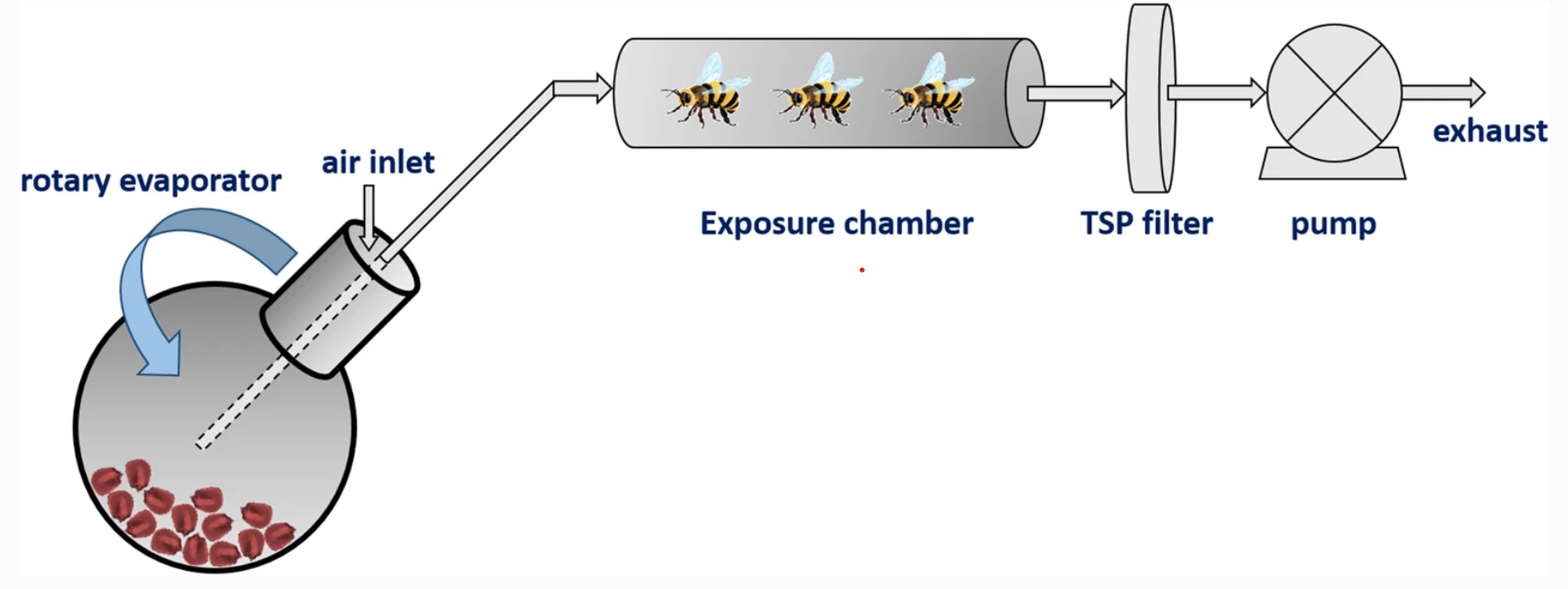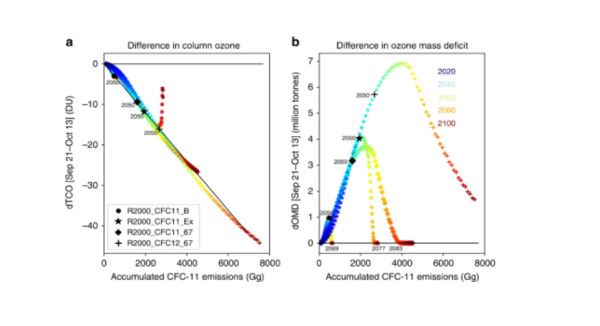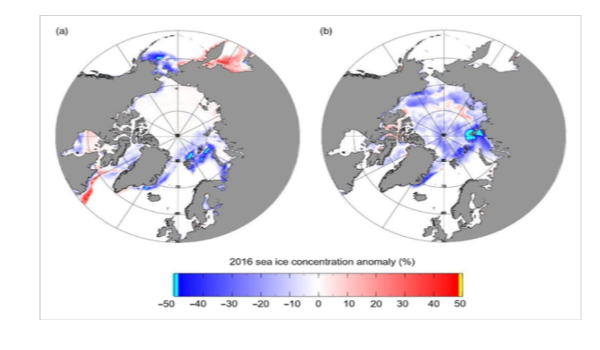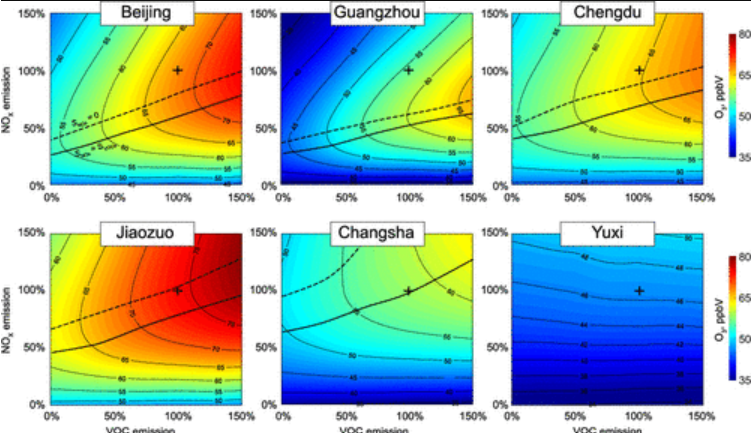Within the CAS, we conduct a diverse range of research and thus produce a wide variety of research papers. Here, we bring the spotlight to some of our favourite bits of research written with academics from the CAS.
For quick navigation, please use the following anchors:
-
Expert perceptions of game-changing innovations towards net zero
-
Volcanic air pollution and human health: recent advances and future directions
-
Where is the EU headed given its current climate policy? A stakeholder-driven model inter-comparison
-
Novel method for ozone isopleth construction and diagnosis for the Ozone Control Strategy
-
Evaluating integrated impacts of low-emission transitions in the livestock sector
-
Lessons from Bali for small-scale biogas development in Indonesia
-
Delay in recovery of the Antarctic ozone hole from unexpected CFC-11 emissions
-
Organic compounds in a Sub-Antarctic ice core: A potential suite of sea ice markers
-
Developing Green: A case for the Brazilian manufacturing industry
-
Recent multivariate changes in the North Atlantic climate system, with a focus on 2005-2016

Expert perceptions of game-changing innovations towards net zero
CAS academics: Dr Annela Anger-Kraavi; Elin May
Transformative low-carbon innovations are essential to supplement current mitigative efforts and put the world on a trajectory toward net-zero. However, the exact role such innovations will play is not clearly understood. Using a survey of over 250 climate and energy experts, this research investigates the true mitigative potential of transformative innovations.
Expert assessments of key innovative technologies suggested that many of the innovations commonly represented in "well-below-2°C" scenarios - such as CCS - are likely to experience considerable and impactful delays, and thus their role may need re-evaluating in future pathways. Instead, technological innovations such as next-generation energy storage, iron-ore electrolysis, and alternative building materials, were considered to be top priorities for a successful transition.
Interestingly, experts also indicated that other disruptive innovations - such as alternative economic models and lifestyle shifts - will be extremely important in achieving net zero, and should not be overlooked in modelling scenarios.
Read the full paper on Energy Strategy Reviews.
Perdana, S., Xexakis, G., Koasidis, K., Vielle, M., Nikas, A., Doukas, H., Gambhir, A., Anger-Kraavi, A., May, E., McWilliams, B., Boitier, B. (2023). Expert perceptions of game-changing innovations towards net zero. Energy Strategy Reviews, 45, 101022 (DOI: 10.1016/j.esr.2022.101022).

Volcanic air pollution and human health: recent advances and future directions
CAS academic: Dr Anja Schmidt
To date, the effects of prolonged exposure has received very little attention and the health effects of many major eruptions near large populations have gone entirely unmonitored – large knowledge gaps remain regarding whether such chronic exposure to volcanic air pollution can trigger the development of potentially fatal diseases.
However, volcanic air pollution can affect populations thousands of kilometres away from the source, with this pollution lasting for days, decades or even centuries. In this paper, we summaries the key advances and possibilities in the assessment of health hazards, effects, risk and management.
Some of the recent advances identified include:
- Standardised ash assessment methods
- Community-vase air quality monitoring networks
- The development of risk and impact assessment methods
Studies into the health effects of volcanic air pollution can be facilitated by:
- The continued co-development of standardised protocols
- Supporting local study teams
- Procuring equipment
- Funding
- Ethical permissions
Read the full paper on Springer.
C Stewart, DE Damby, CJ Horwell, T Elias, E Ilyinskaya, I Tomašek, BM Longo, A Schmidt, HK Carlsen, E Mason, PJ Baxter, S Cronin, C Witham – Bulletin of Volcanology (2021) 84, 11, (DOI: 10.1007/s00445-021-01513-9)

Where is the EU headed given its current climate policy? A stakeholder-driven model inter-comparison
CAS academic: Dr Annela Anger-Kraavi
In this paper we use several models (including integrative assessment, energy system and sectoral) to conduct a model inter-comparison for the EU - where the scenario logic and research questions are formulated based upon stakeholder concerns.
We then produce a scenario framework to explore where the region is headed, rather than how to achieve it's goals, by extrapolating current policy efforts into the future.
We find that whilst Europe is on track to overperform it's 40% emission reduction target, it is far from achieving the latest 55% emission reduction target. Aside from electrification of the transport system, we found that deployment levels of carbon capture and storage are intertwined with deeper emission cuts and hydrogen diffusion. This multi-model exercise also highlighted the benefits from deeper decarbonisation in regards to energy security and jobs, etc.
Read the full paper on ScienceDirect.
A Nikas, A Elia, B Boitier, K Koasidis, H Doukas, G Cassetti, A Anger-Kraavi, H Bui, L Campagnolo, R De Miglio, E Delpiazzo, A Fougeyrollas, A Gambhir, M Gargiulo, S Giarola, N Grant, A Hawkes, A Herbst, AC Köberle, A Kolpakov, P Le Mouël, B McWilliams, S Mittal, J Moreno, F Neuner, S Perdana, GP Peters, P Plötz, J Rogelj, I Sognnæs, D-J Van de Ven, M Vielle, G Zachmann, P Zagamé, A Chiodi – The Science of The Total Environment (2021) 793, 148549, (DOI: 10.1016/j.scitotenv.2021.148549)
Novel method for ozone isopleth construction and diagnosis for the Ozone Control Strategy
CAS academic: Prof Alex Archibald
Here we innovatively use the Community Multiscale Air Quality model with the high order decoupled direct method to simulate ozone pollution of China in 2017 and derive ozone isopleths for individual cities.
Our simulation, which covers the entire China Mainland, suggests severe ozone pollution far in excess of Chinese Level -II Ambient Air Quality Standards. The city-specific ozone isopleths generated from this study are instrumental in forming hybrid and differentiated strategies for ozone abatement in China.
Read the full paper on Environmental Science & Technology.
H Shen, Z Sun, Y Chen, AG Russell, Y Hu, MT Odman, Y Qian, AT Archibald, S Tao – Environmental Science and Technology (2021) 55, 15625, (DOI: 10.1021/acs.est.1c01567)

Projected changes in seasonal and extreme summertime temperature and precipitation in India in response to COVID-19 recovery scenarios.
CAS academic: Prof Alex Archibald
Across the glove, pathways for future emissions are highly uncertain. This is particularly true as countries recover from COVID-19. In this paper, we explore a multi-model ensemble of Earth system models utilising potential global emissions pathways following from COVID-19, and their consequences for India’s summertime climate in both the near- and long-term.
We find that near-time climate changes are dominated by natural climate variability. Further, by 2050, pathway-induced spatial patterns in the seasonally-aggregated precipitation become clearer - with a slight drying in the fossil-based scenario and wetting in the strong renewable scenario. In addition to this, we found that extreme temperatures and precipitation events in India are expected to increase in both magnitude and frequency regardless of the emissions scenario. However, the spatial patterns of these changes and the extent of change are pathway dependent.
Read the full paper on Environmental Research Letters.
J D'Souza, F Prasanna, LN Valayannopoulos-Akrivou, P Sherman, E Penn, S Song, AT Archibald, MB McElroy – Environmental Research Letters (2021) 16, 114025, (DOI: 10.1088/1748-9326/ac2f1b)

Evaluating integrated impacts of low-emission transitions in the livestock sector
CAS academic: Dr. Annela Anger-Kraavi
In this paper we illustrate the results of a combined qualitative and quantitative assessment of key impacts for two low-carbon emission transition pathways for the Dutch livestock sector. We found that each individual low-emission pathway has a unique footprint of positive and negative impacts – largely shaped by the differing combinations of existing and new technologies, the infrastructure used, and the different practices deployed. We discuss the relevance of these findings for policy and governance processes within the paper, particularly where there is a need to develop optimised pathways to mate different sustainable development goals.
Read the full paper on ScienceDirect.
E Spijker, A Anger-Kraavi, H Pollitt, DJ van de Ven – Environmental Innovation and Societal Transitions (2020) 35, 482, (DOI: 10.1016/j.eist.2019.11.003)

A new method to assess the acute toxicity towards honeybees of the abrasion particles generated from seeds coated with insecticides
CAS academic: Dr Chiara Giorio
Neonicotinoid pesticides were first introduced for use in the 1990s. Due to their acute lethal effects on bees, however, the European Union introduced restrictions on their use. This led to the introduction of replacement pesticides, such as methiocarb and thiacloprid, despite a lack of information on both the toxicity and exposure scenarios for honeybees.
As vast quantities of insecticide-containing dust can be released during sowing, we developed a laboratory apparatus to quantify the toxicity of the dusts produced from the abrasion of seed coatings. This quantification was based on:
- An airstream transporting coating particles into an exposure chamber
- Exposure of bees to reproducible and measurable concentrations of insecticide
- Direct measurements of the exposure of dose on single bees
Surprisingly, we found that the replacement insecticide methiocarb has a toxicity at the same order of magnitude as clothianidin (a neonicotinoid pesticide), whilst thiacloprid had a significant lower acute toxicity.
Read the full paper on Springer.
A Lentola, C Giorio, E Petrucco Toffolo, V Girolami, A Tapparo – Environmental Sciences Europe (2020) 32, 93, (DOI: 10.1186/s12302-020-00372-z)

Minimal climate impacts from short-lived climate forcers following emissions reductions related to the COVID-19 pandemic
CAS academic: Prof Alex Archibald
As a result of the COVID-19 pandemic, unprecedented lockdown measured were imposed across the globe in an attempt to reduce the spread of the disease. Due to this, there were drops in economic activity and corresponding reductions in transport, industrial and aircraft emissions. This reduced greenhouse gas (GHG) emissions as well as numerous other pollutants that affect our climate.
Here, we used modern computer simulations to quantify just how these changes may have impacted the chemical make-up of the atmosphere and the likely short-term impacts on climate. Unfortunately, we find that despite the large decreased in nitrogen dioxide and atmospheric particles, these changes result in a very minor impact on the energy balance of the atmosphere. Further, these effects are likely to be short-lived should emissions return to pre-lockdown levels.
Read the full article on Geophysical Research Letters.
J Weber, Y Shin, J Staunton Sykes, S Archer Nicholls, N Abraham, A Archibald – Geophysical Research Letters (2020) 47, e2020GL090326, (DOI: 10.1029/2020GL090326)

Closing the green finance gap - A systems perspective
CAS academic: Dr. Annela Anger-Kraavi
If the UK is to meet its climate policy objectives, we must rapidly decarbonise the UK’s energy sector. In this paper, we explore key investment barriers; a theoretical framework for investigation; and possible solutions to the problems. Using academic literature, policy reports and interviews with financial investors and experts, we confirm that the current policy uncertainty and financial short-termism (that is, an excessive focus on short-term results at the expense of long-term interest) represent the two main green investment barriers.
Based on the evidence gathered, we recommend the adoption of systems theory as an analytical framework to inform the related policy debate. We also propose the expansion or development of sustainable investment vehicles as a near-term solution whilst long-term policy interventions are being prepared.
Read the full paper on ScienceDirect.
S Hafner, A Jones, A Anger-Kraavi, J Pohl – Environmental Innovation and Societal Transitions (2020) 34, 26, (DOI: 10.1016/j.eist.2019.11.007)

Lessons from Bali for small-scale biogas development in Indonesia
CAS academic: Dr. Annela Anger-Kraavi
Biogas holds a lot of potential as a renewable fuel source. In this paper, we investigated exactly how biogas could contribute to a low-carbon transition pathway through its usage as a cooking fuel. Interestingly, we find that whilst biogas offers an economic benefit, and could potentially lead to increases in national GDP and overall employment levels, it can also lead to an increase in the quantity of national carbon emissions.
Read the full paper on ScienceDirect.
M Silaen, R Taylor, S Bößner, A Anger-Kraavi, U Chewpreecha, A Badinotti, T Takama – Environmental Innovation and Societal Transitions (2020) 35, 445, (DOI: 10.1016/j.eist.2019.09.003)

Delay in recovery of the Antarctic ozone hole from unexpected CFC-11 emissions
CAS academic: Prof John Pyle
Whilst the Antarctic ozone hole is decreasing in size, its recover will be affected by atmospheric variability and potential, unexpected changes in chlorinated source gas emissions. Here, we use model simulations to show that the ozone hole will largely cease to occur by 2065 – should countries adhere to the Montreal Protocol. An ozone-hole-free-year could be seen as soon as the early 2020s, however the recently discovered increase in CFC-11 emissions may ozone recovery.
Read the full paper on Nature Communications.
SS Dhomse, W Feng, SA Montzka, R Hossaini, J Keeble, JA Pyle, JS Daniel, MP Chipperfield – Nature communications (2019) 10, 5781, (DOI: 10.1038/s41467-019-13717-x)

Organic Compounds in a Sub-Antarctic Ice Core: A Potential Suite of Sea Ice Markers
CAS academic: Prof Markus Kalberer
Investigating organic compounds in ice cores holds the potential to unlock vast quantities of new information in these 'climate archives'. In this study, we present results from the first ever ice core drilled on the sub-Antarctic island of Bouvet.
We find that the amounts of some organic compounds are related to the amounts of sea ice surrounding the island in spring due to its effect on the phytoplankton population, whereas other organic compounds are related to the amounts of sea ice in the summer (the sources of which require further investigations).
Our study demonstrates one of the potential applications of organic compounds in relation to sea ice, and help us to better understand sea ice changes in the past.
Read the full article on Geophysical Research Letters.
ACF King, ER Thomas, JB Pedro, B Markle, M Potocki, SL Jackson, E Wolff, M Kalberer – Geophys Res Lett (2019) 46, 9930, (DOI: 10.1029/2019gl084249)

Developing Green: A Case for the Brazilian Manufacturing Industry
CAS academic: Dr. Annela Anger-Kraavi
Using Brazilian manufacturing an example, we explored potential economic transformations that contributed to Paris Agreement targets. In this paper, we find that an optimal mix of green stimuli can assist in both modernising and decarbonising the Brazilian manufacturing sectors. This mix would allow for an increase in economic growth and development, whilst still reducing the quantity of carbon dioxide emissions produced in these sectors.
Read the full paper on MDPI.
C Gramkow, A Anger-Kraavi – Sustainability (2019) 11, 6783, (DOI: 10.3390/su11236783)

A measurement-based verification framework for UK greenhouse gas emissions: an overview of the Greenhouse gAs Uk and Global Emissions (GAUGE) project
CAS academic: Prof Rod Jones
In this paper we describe the motivation, design and execution of the GAUGE project. The key objective of GAUGE was to use atmospheric data to estimate the magnitude, distribution and uncertainty of the UK greenhouse gas (GHG) budget (2013-2015).
Building upon an established tall-tower GHG measurement network, we established a multi-year and interlinked measurement and data analysis programme, and use atmospheric transport models to determine the relative importance of different measurements to infer the UK's GHG budget.
We anticipate that the results from the GAUGE project will assist other countries on how to use atmospheric data to quantify their nationally determined contributions to the Paris Agreement.
Read the full paper on European Geosciences Union.
PI Palmer, S O'Doherty, G Allen, K Bower, H Bösch, MP Chipperfield, S Connors, S Dhomse, L Feng, DP Finch, MW Gallagher, E Gloor, S Gonzi, NRP Harris, C Helfter, N Humpage, B Kerridge, D Knappett, RL Jones, M Le Breton, MF Lunt, AJ Manning, S Matthiesen, JBA Muller, N Mullinger, E Nemitz, S O'Shea, RJ Parker, CJ Percival, J Pitt, SN Riddick, M Rigby, H Sembhi, R Siddans, RL Skelton, P Smith, H Sonderfeld, K Stanley, AR Stavert, A Wenger, E White, C Wilson, D Young – Atmospheric Chemistry and Physics (2018) 18, 11753, (DOI: 10.5194/acp-18-11753-2018)

Recent multivariate changes in the North Atlantic climate system, with a focus on 2005–2016
CAS academics: Prof Alex Archibald; Dr Maria Russo
Major changes are occurring across the North Atlantic climate system which can directly affect the climate and air quality of surrounding continents. In this paper, we characterise the observed changes across multiple levels of the system.
Some of the changes found to the North Atlantic climate system include:
- an increase in the speed of the North Atlantic jet stream in winter and a southward shift in the North Atlantic jet stream in summer, associated with a weakening summer North Atlantic Oscillation
- increases in ozone and methane
- increases in net absorbed radiation in the mid-latitude western Atlantic
- a decline in Atlantic sector Arctic sea ice and rapid melting of the Greenland Ice Sheet, as well as many interactions between these changes.
In addition to this, we find that there are many interactions between the observed changes – yet these interactions remain poorly understood.
Read the full paper on Royal Meteorological Society.
J Robson, RT Sutton, A Archibald, F Cooper, M Christensen, LJ Gray, NP Holliday, C Macintosh, M McMillan, B Moat, M Russo, R Tilling, K Carslaw, D Desbruyères, O Embury, DL Feltham, DP Grosvenor, S Josey, B King, A Lewis, GD McCarthy, C Merchant, AL New, CH O'Reilly, SM Osprey, K Read, A Scaife, A Shepherd, B Sinha, D Smeed, D Smith, A Ridout, T Woollings, M Yang – International Journal of Climatology (2018) 38, 5050, (DOI: 10.1002/joc.5815)





